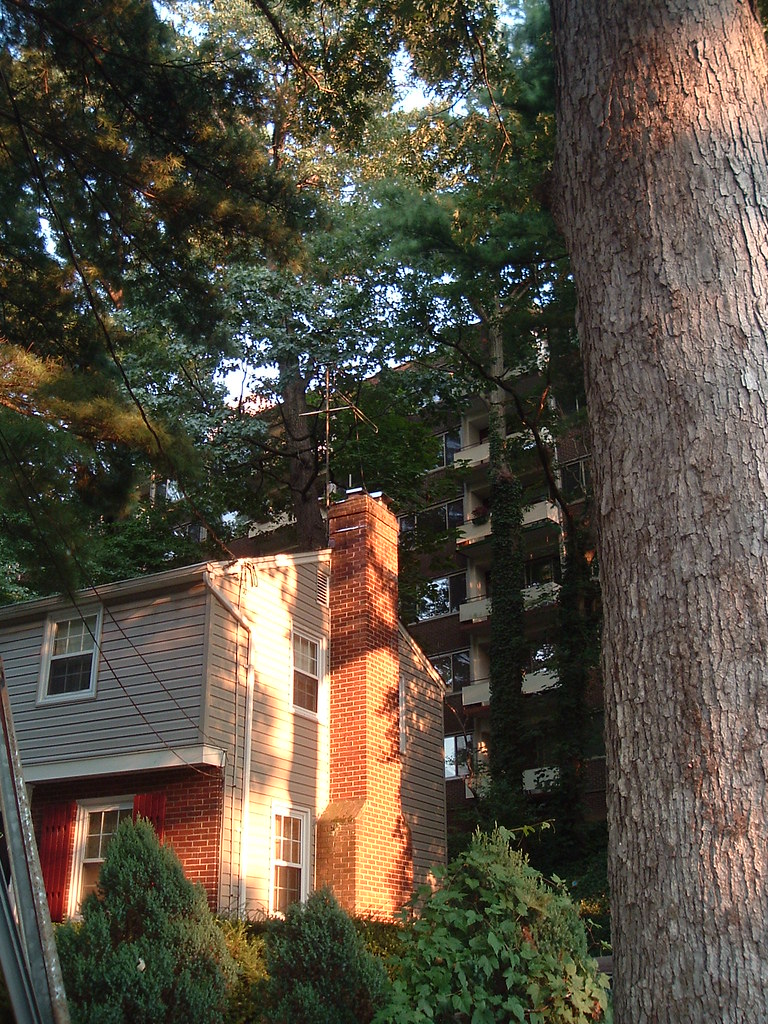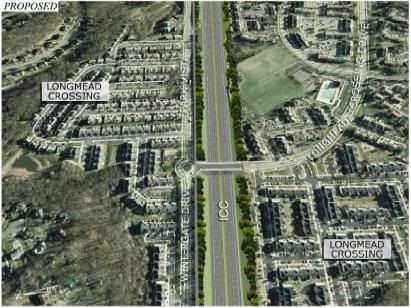"Montgomery County people cannot come to any collective agreement - and probably never will - on whether we will be urban or suburban." - Nancy Floreen
 County Councilwoman Nancy Floreen (D-At Large) says there are about a hundred people who show up in her office on a regular basis, and a handful that stop by each and every day. They are the "advocates," she calls them, a very small but very vocal minority representing a few select interests (cough cough NeighborsPAC) in Montgomery County.
County Councilwoman Nancy Floreen (D-At Large) says there are about a hundred people who show up in her office on a regular basis, and a handful that stop by each and every day. They are the "advocates," she calls them, a very small but very vocal minority representing a few select interests (cough cough NeighborsPAC) in Montgomery County. And their input in County government, while valued, can be frustrating. "It's complicated once you get past the spin that people put on things," Floreen notes. "But advocacy is advocacy. You gotta respect it, and listen to it." There's still quite a lot of spin. "That's why I keep this," Floreen adds, picking up a copy of Harry G. Frankfurt's On Bullshit on the table next to her desk.
Also in her office is a photocopy of an old New Yorker article, "The Slow Road." In it is a statistic: since 1970, the United States population has grown forty percent; the number of registered vehicles, one hundred percent; and the number of roads, six percent. "Duh!" Floreen spits, emphasizing her point: when it comes to new roads - or any form of transportation, we've fallen way behind.
 Montgomery County's a pretty well-educated place, home to the smartest city in America and one of the country's best school systems. One could even argue that the County's lavish spending on schools over the past thirty years has sucked money away from roads. A map from Marylanders for a Second Crossing shows a slew of proposed highways for Montgomery County that were all cancelled, including the Outer Beltway, a precursor to the InterCounty Connector.
Montgomery County's a pretty well-educated place, home to the smartest city in America and one of the country's best school systems. One could even argue that the County's lavish spending on schools over the past thirty years has sucked money away from roads. A map from Marylanders for a Second Crossing shows a slew of proposed highways for Montgomery County that were all cancelled, including the Outer Beltway, a precursor to the InterCounty Connector.A lot of those cancelled roads are in still-rural or transitioning parts of the County, like Boyds or Ashton. "You don't build a lot of roads where they're not wanted," Floreen notes. But school funding can't be all to blame. (It really isn't. Unlike our neighbors Fairfax or Howard counties, we put our emphasis on mass transit. As a result, we have over a dozen Metro stations, and unlike a lot of suburbs or even cities, we know what to do with them.) "That's what I like to tell myself when I want to simplify it," she says, adding, "It's more fun to cut a ribbon for a new school than it is to open a road that people have been haranguing you about."
(Yeah, just tell that to Bobby Haircut.)
Of course, Nancy Floreen listens to each harangue, tirade and plea, from suddenly homeless families (Christy's my sixth-grade math teacher, by the way) to the disgruntled residents of Longmead Crossing.

"I approved Longmead Crossing . . . it was a mistake we made."It's the Longmead Crossing folks who especially worry Floreen. In the 1980's, as a member of the Montgomery County Planning Board (which she served on until joining the County Council in 2002), she approved the Layhill development straddling the ICC right-of-way. "It was a mistake we made," Floreen says. "I said 'these people are going to be very upset'" if the ICC was built, despite planners' assertions that notifying homebuyers in advance would keep them quiet. Instead, they've mounted a multi-year campaign to stop the ICC, despite signs from Governor O'Malley that there's no turning back.
If you listen to Duchy Trachtenberg, Montgomery voters are pissed off about growth and traffic. But Floreen argues that relief, albeit slow, is on the way. "[We're experiencing the] growing pains of a county fulfilling its master plan," she says, pointing out that the County has increased transportation funding by 72 percent without burdening taxpayers. The traffic is still there, and the people are still coming, but Montgomery County has to keep going.
"It's very difficult to say 'no, we don't want you here,'" Floreen says, adding: "I refuse to be part of a county that shuts its door on people." And as a former planner, Nancy Floreen is committed to making sure new people are taken care of - and, most importantly of all, listened to.

9 comments:
Congrats on scoring the interview. I look forward to reading about your other ventures through Rockville.
So, Nancy Floreen listens? Hmmm...
Has she listened to the studies that say that people who live close to highways have increased risks of leukemia and other cancers, heart disease, asthma, and low-birthweight babies? Even if some of those who live near the ICC route knew it was in the plans, does that make it right to subject them to these health risks?
Has she listened to the evidence that human activity is causing global warming? Does she care that building the ICC would increase the miles people drive in the area by 20% versus not building it, adding to greenhouse gas emissions?
Does she understand that improving access to public transportation, encouraging transit-oriented development, and planning walkable communities can go a long way toward reducing traffic congestion?
I'm not impressed by her ability to listen.
This has become more of a state issue and less a County one - in the same way that the highway administration, following rules set by the EPA, chose to route the ICC through a neighborhood instead of across Lake Needwood.
And Longmead Crossing residents can't escape the fact that they knew the ICC was going to be built. The Planning Board may have underestimated their unhappiness after it was approved, but LC residents then and now have the option to live somewhere else, as unfortunate as that sounds.
You wouldn't have lost your house to the ICC, Roger. I know a few people who will. They'd probably take a little more pollution if they knew their house and property would be safe.
Dan, I disagree with all three paragraphs of your post.
First, you wrote that building the ICC "has become more of a state issue and less a County one." Well, sure it has, now. But, imagine how different the situation would be now if, during the Ehrlich administration, we had had a Montgomery County Council and Executive who opposed the ICC. It would have been much more difficult for Ehrlich to push it through than it was under the "End Gridlock" council, who strongly supported the ICC. And our current council and executive can still influence the debate.
Also, what's your point about the change in the ICC route near Lake Needwood? Are you blaming the EPA for the planned destruction of Cashell Estates and other neighborhoods? If so, that's a bit too simplistic. The applicable laws require the agencies to choose alternatives that minimize impacts on all aspects of the environment. The major responsibility for the destruction of neighborhoods and wetlands by the ICC would lie with the Ehrlich administration (and O'Malley, if he continues to support it), not the EPA.
Second, you missed my point about running the ICC through Longmead. Do you think it makes sense to put ANY homes so close to a six-lane highway? We wouldn't allow homes and nuclear power plants to be so close together, would we? Shouldn't we strive to improve the health of county residents rather than allowing them to live in such a situation?
Finally, I don't understand your point in the last paragraph, either. Of course I sympathize with those who would lose their homes. But you're saying that they would be OK with the ICC if they weren't losing their homes. Again, it's more complicated than that. The ICC would decrease the quality of life for whole communities. I know plenty of people all along the ICC route who would not lose their homes, but who are dreading the idea of having it so close, because of the noise, air pollution, and visual impact...and I know many who would lose their homes, who oppose the ICC on principle, not simply because of the impact on them personally.
Very little about the saga of the ICC is black and white.
For starters, the ICC is not a nuclear power plant, but it might hurt residents' health. You'll suggest that we build transit instead and encourage more people to walk places.
But that can't work right now, because people in Montgomery County drive to get around. If we want the County to be covered in rapid transit lines, we'll have to build denser. Glenmont and Layhill will have to start looking more like Bethesda and Silver Spring. That also changes community character - some would say for the better, some for the worse. We've chosen instead to keep the suburban parts of the county suburban and, as a result, we need better roads/highways for people to get around.
Call this black-or-white, but we can either stop building McMansions in Olney and Gaithersburg and wherever or we can build the ICC. There's no grey area in between, unless you have some magical third way I don't know about.
roger seems unhappy that Nancy Floreen doesn't agree with him-- but that doesn't mean she didn't listen. Listening to someone doesn't necessarily equate to agreeing with him or her.
Roger said...
So, Nancy Floreen listens? Hmmm...
Has she listened to the studies that say that people who live close to highways have increased risks of leukemia and other cancers, heart disease, asthma, and low-birthweight babies? Even if some of those who live near the ICC route knew it was in the plans, does that make it right to subject them to these health risks?
Has she listened to the evidence that human activity is causing global warming? Does she care that building the ICC would increase the miles people drive in the area by 20% versus not building it, adding to greenhouse gas emissions?
Does she understand that improving access to public transportation, encouraging transit-oriented development, and planning walkable communities can go a long way toward reducing traffic congestion?
I'm not impressed by her ability to listen.
2/06/2007 5:05 PM
RE: Nothing but BS'in SCARE TACTICS to sabatoge any form of Highway Building in Maryland.
BTW- Why wasn't all of this BS talk about cancer, and diseases when Virginia built the Springfield Interchange near SEVERAL HOMES, and where the heck was all the BS complaints about politicians forcing developers to rebuild lead poison prone warehouses into Condos.
"For starters, the ICC is not a nuclear power plant, but it might hurt residents' health. You'll suggest that we build transit instead and encourage more people to walk places."
Skip the 'might' - Studies demonstrate there are indeed health impacts to living not just adjacent to, but even within 1/3 mile of highways. Also, that kind of power plant has far less emissions than a highway.
"But that can't work right now, because people in Montgomery County drive to get around. If we want the County to be covered in rapid transit lines, we'll have to build denser. Glenmont and Layhill will have to start looking more like Bethesda and Silver Spring. That also changes community character - some would say for the better, some for the worse. We've chosen instead to keep the suburban parts of the county suburban and, as a result, we need better roads/highways for people to get around."
No, we don't have to build denser. If you're premise is that only dense populations can economically support rapid transit lines, you are mistaken. My guess is you are assuming what the cost structure for rapid transit would be based on using Metro. Use PRT (personal rapid transit) instead, which will be considerably less expensive than Metro to build and operate, and it will be very economically viable to extend mass transit well into the county, and with dense enough station locations to make pedestrian access far more widely available. PRT will be faster and more convenient than cars, so who would need more highways built?
"Call this black-or-white, but we can either stop building McMansions in Olney and Gaithersburg and wherever or we can build the ICC. There's no grey area in between, unless you have some magical third way I don't know about."
No magic, just using currently available technologies to realize the best means of rapid transit. Does Montgomery County deserve any less?
The ICC's main purpose is to construct a third major highway at Konterra (www.konterra.com), a little patch o' land north of calverton, south of Laurel.
The ICC northern alignment made a bee-line towards Laurel and just shy of 95, made a dog-leg south to link up at the same spot as the southeasterly route that was chosen.
Another highway is needed at Konterra in order to justify teh dense development that developer Kingdon Gould has been trying to get approved for decades. The 4.2 billion spent on 18 miles of highway makes his land far more valuable and he's paid elected officials handsomely to make his vision come true. This is Floreen's kind of "advocate". Because money talks. Knapp, Silverman, Ervin, and probably Navarro fill out his stable of soldiers and for some reason Leventhal seems to do his bidding too despite his otherwise strong environmental record.
Claims that the road was meant to serve BWI were rather transparent when the ICC took drivers a good 4 miles out of their way in order to link up at Konterra.
Congestion relief was the main reason the ICC was popular, but what does the ICC do to solve it?
It eliminates traffic lights. The ICC goes over and under roads. That's the only reason the ICC is better than 28/198.
The third option you hoped for was separated grade intersections. They're finishing one now at Rockville Pike and Montrose/Randolph. The major improvement to traffic flow will have little to do with the new Montrose Parkway and a lot to do with taking the dysfunctional Randolph/355 intersection out of the mix. A similar intersection at Georgia and Norbeck was planned but delayed by the ICC boosters because relieving congestion would subtract support for the boondoggle ICC that paid them so well.
These intersections cost about 60 million each. At 4.2 billion, we could remove 70 traffic lights from our commutes and not only would they have eased East West traffic, you'd get improvement in North and South flow thrown in free.
Can you even think of 70 clogged intersections in Montgomery? I start to run dry at 40.
This was explained by Floreen's opponents like Petrides, Lamari, Elrich, and Bailey, but the "End Gridlock" team somehow found the money to pay for an avalanche of snazzy, slick brochures to mail to hundreds of thousands of voters the week before election day.
A good way for Montgomery to seize its quality of life back is to start listening a little themselves; to the guys who are more difficult to hear during the election. The ones who send you black and white Xerox copies rather than full color glossies and only get to make their case on a grand scale in the Gazette and Post questionnaires.
Post a Comment